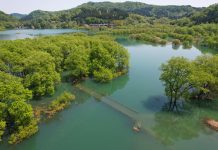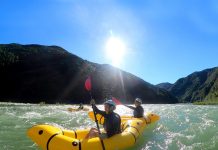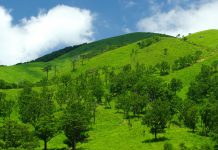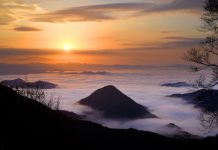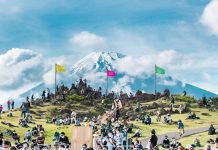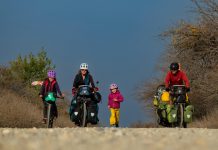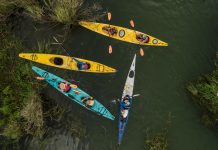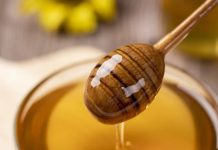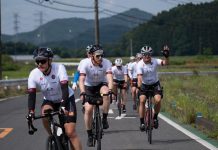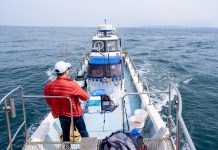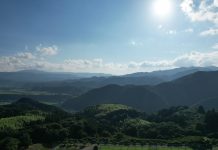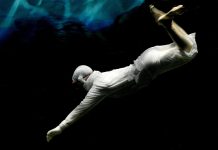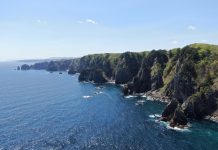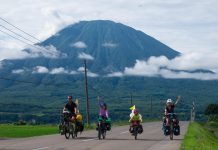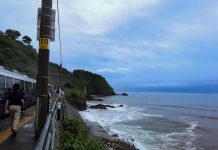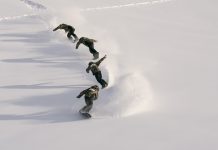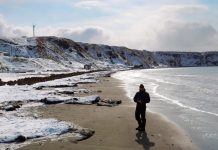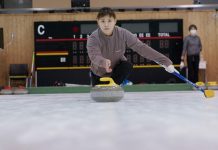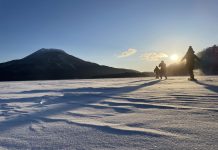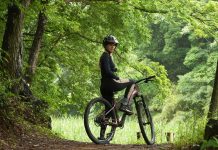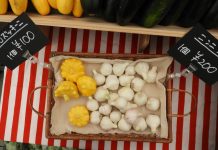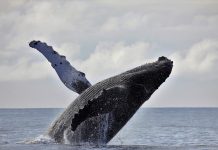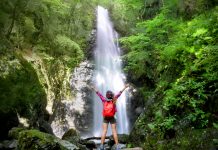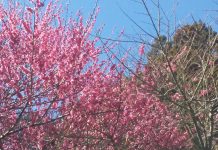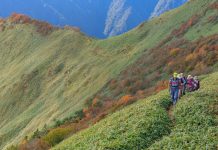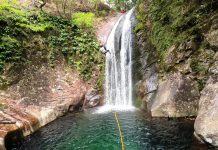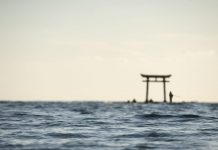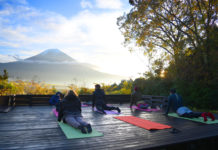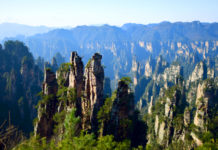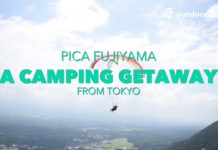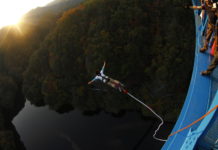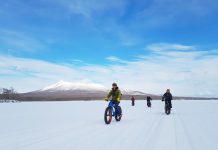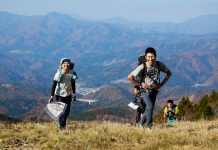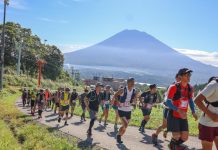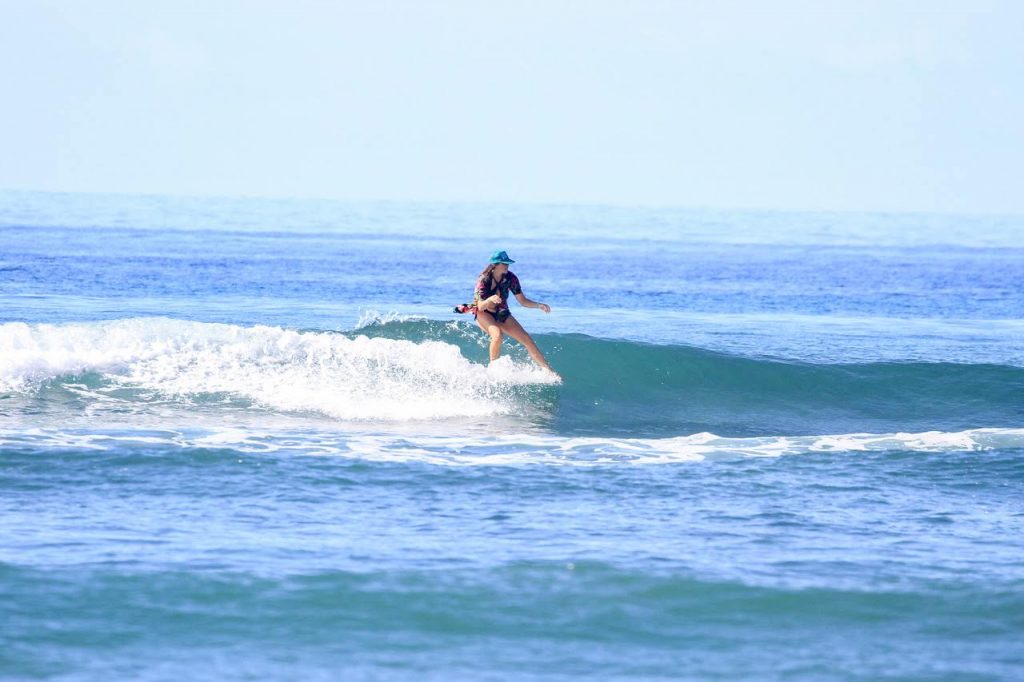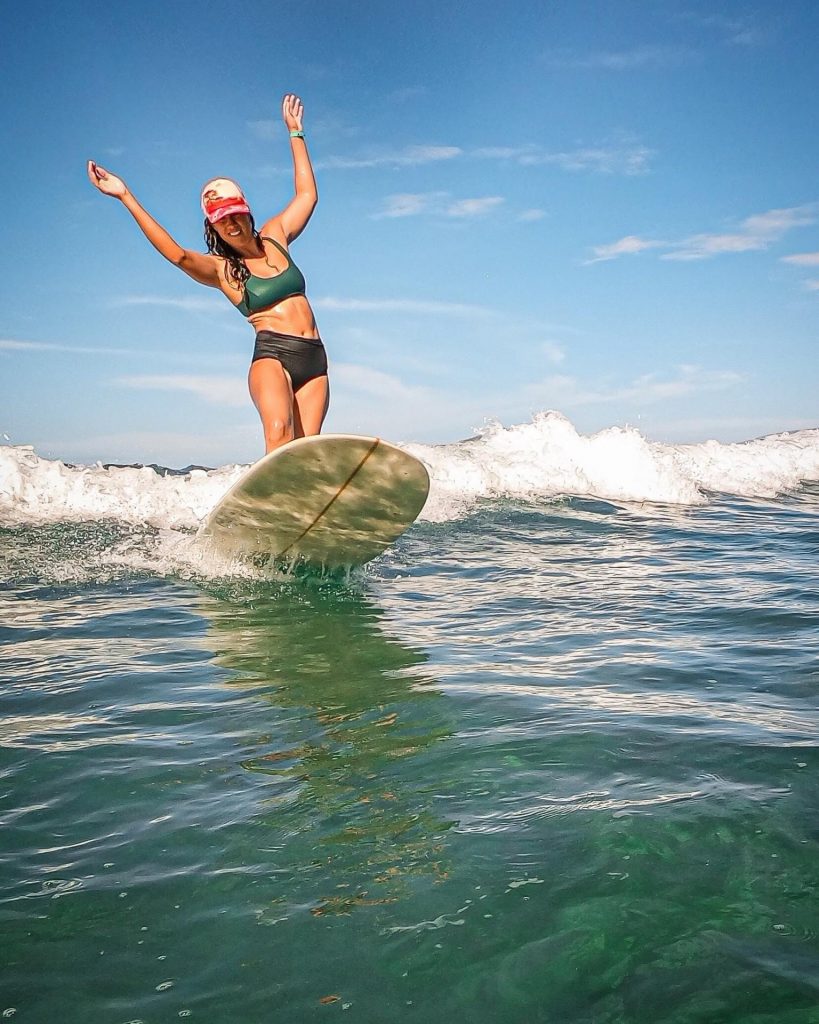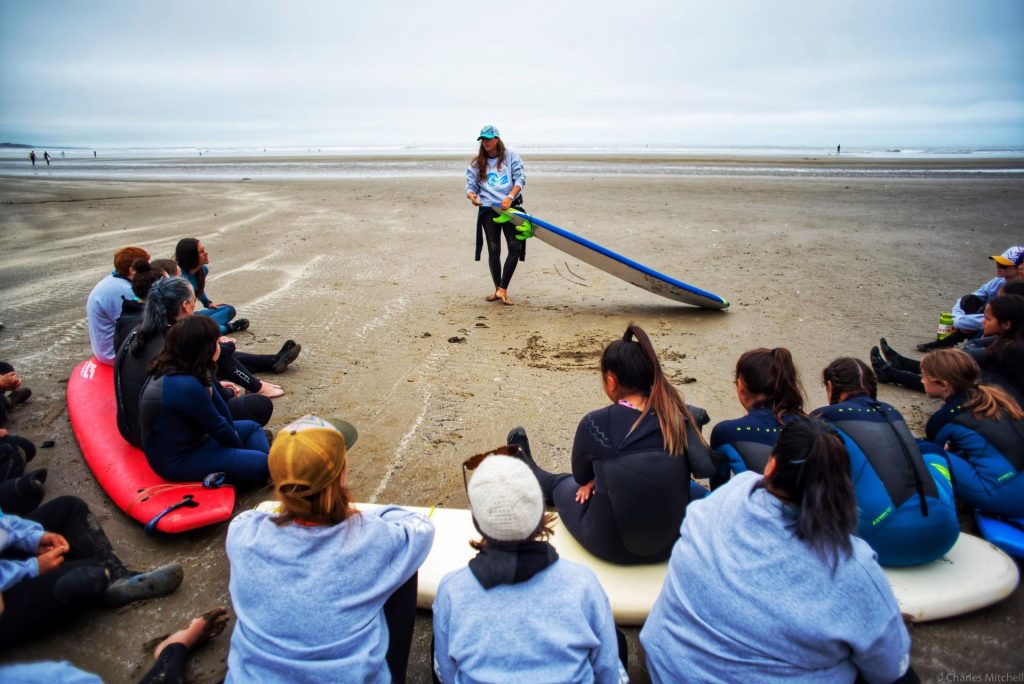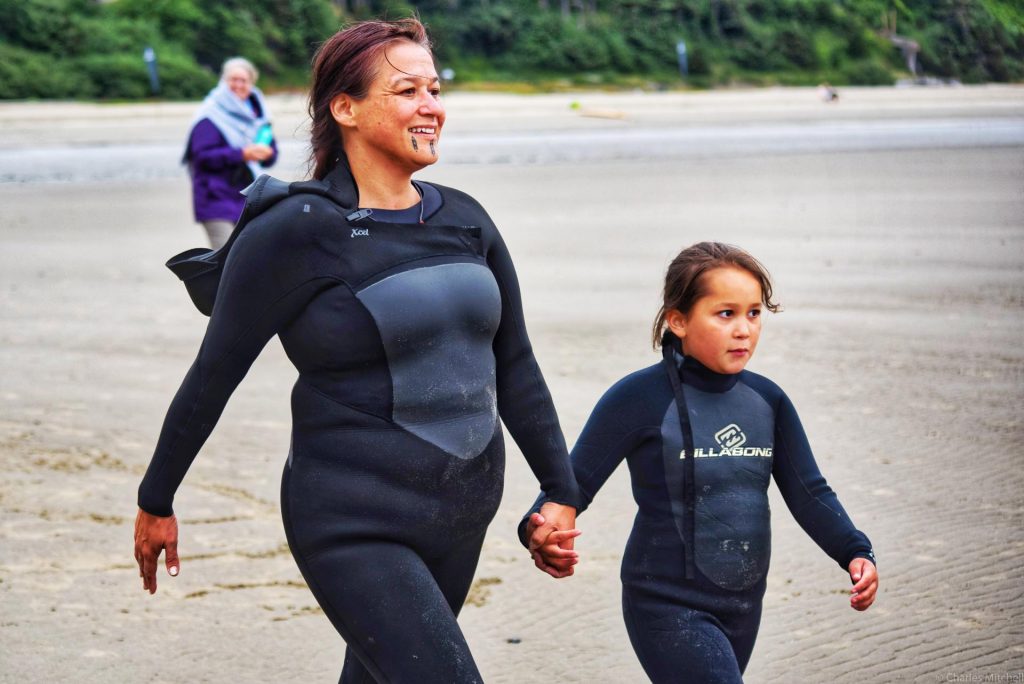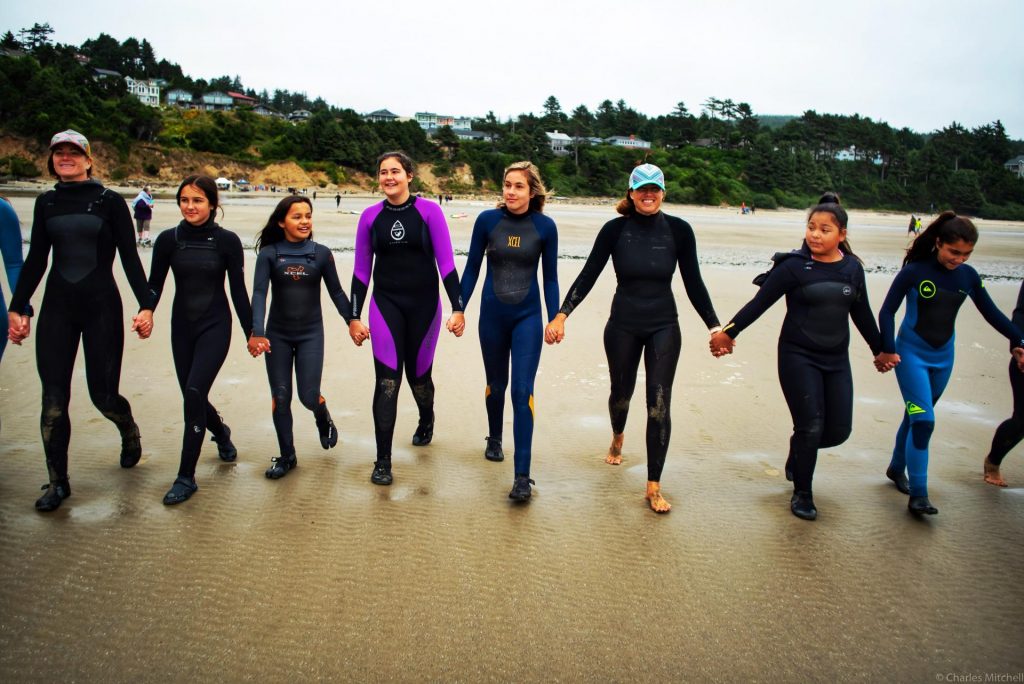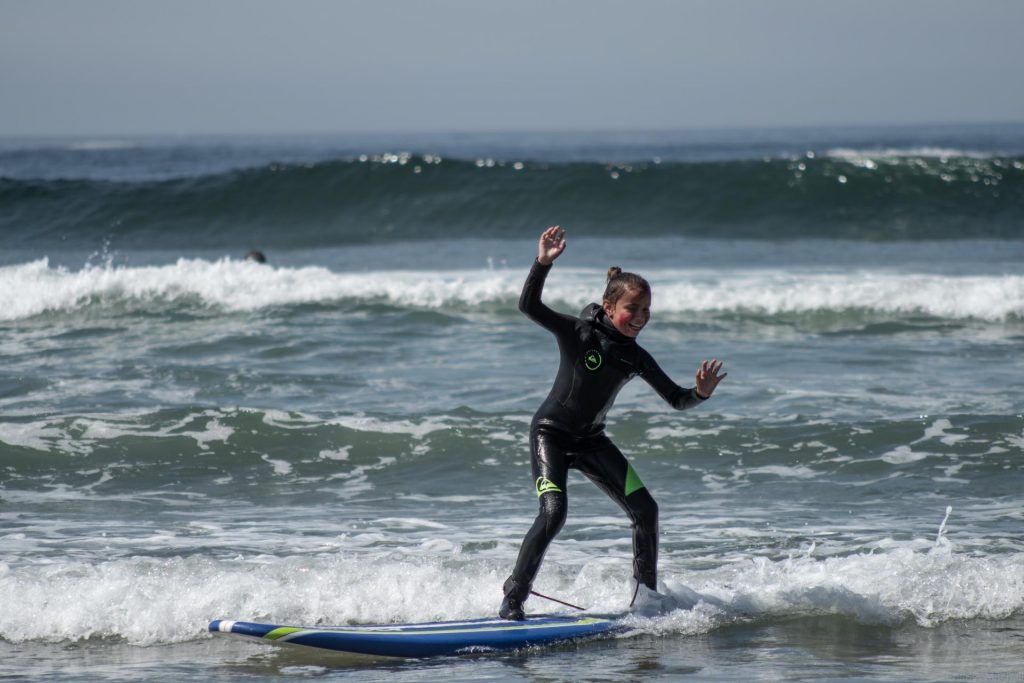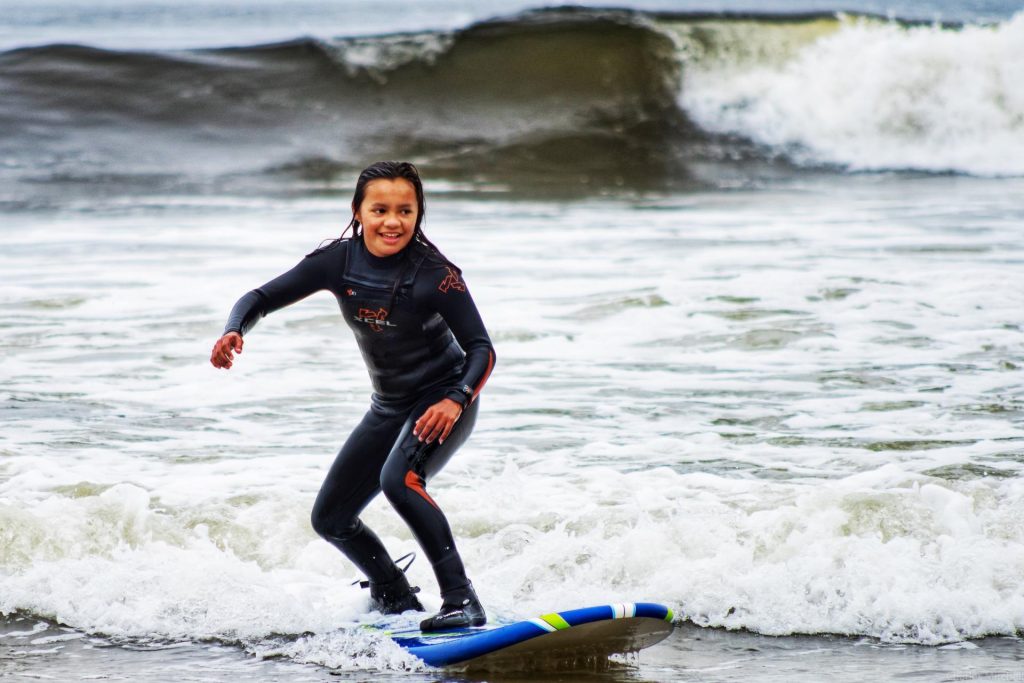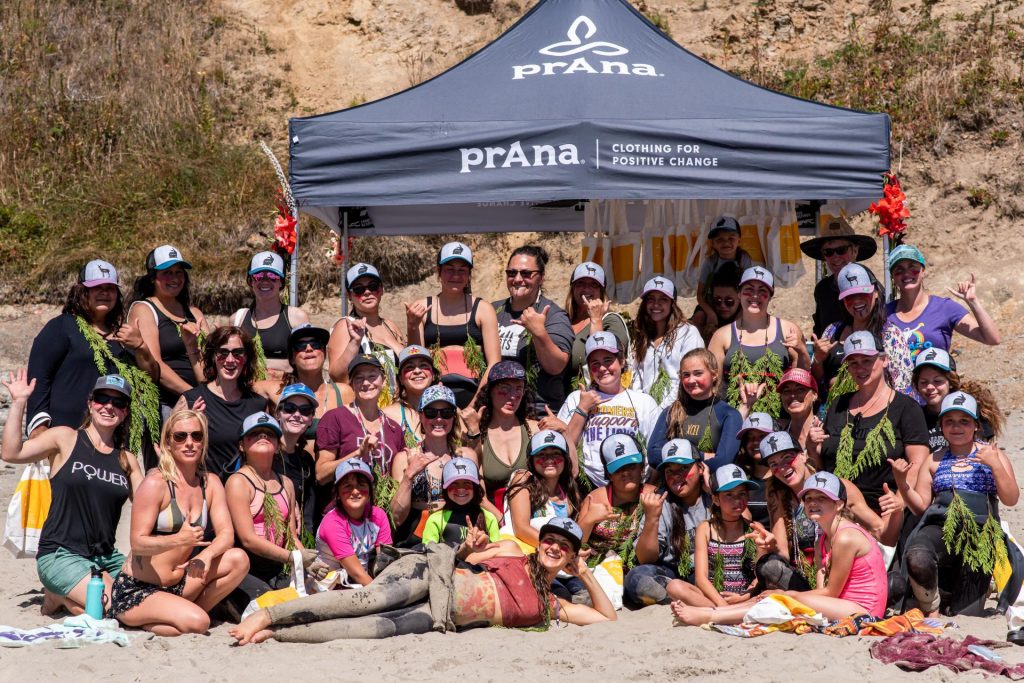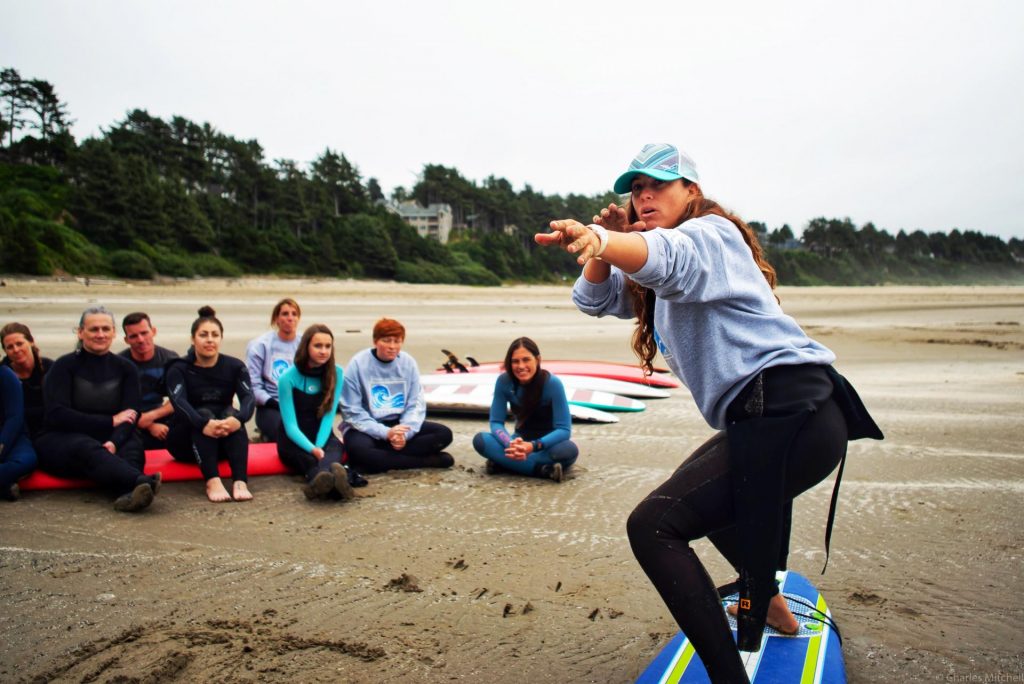Pro surfer Kelly Potts isn’t your typical athlete. At a young age, she traded the competitive world for a greater calling: to create surf clinics to empower indigenous girls and women in Hawaii and on the mainland U.S.
Life wasn’t always easy for Kelly, who faced discrimination as a young female surfer in an image-heavy industry and was even homeless for a time. Today she is a successful surf and life mentor and brand ambassador who focuses on giving back to her community.
We had the chance to meet Kelly last spring when she was traveling through Japan with sustainable clothing brand Prana. We caught up with her recently to talk about her path to becoming a positive role model in the surfing world.

Photo by Island Dream Productions
Rie Miyoshi: Tell me a bit about your journey to become professional surfer?
Kelly Potts: I was born in Oregon and raised in Texas by my single mother. My father moved to Maui when I was 12. He was a surfer his whole life, so when I went to visit him on Maui, the first thing he did when he picked me up from the airport, with surfboards strapped to the top of the rig, was take me surfing. I decided to move to Hawaii to live with my father when I was 14.
When I moved to Maui from Texas, I left my mom, her husband and my older brother behind. I wanted to get to know my father and Hawaii better, but it was heartbreaking leaving my family. It’s sad looking back on that life-changing event, especially now as I’m older. I missed being with the ones who love me so much, but it worked out the way it should and for the best.
While attending high school at Lahainaluna, I would surf almost everyday before and after school. I was so addicted and ended up making the Lahainaluna surfing team. That’s when I started competing in local contests, then regional contests on other islands.
Not long after competing, I met a photographer who landed me my first photo gig for a magazine. That led me to my first sponsor, and eventually other sponsorships and a surfing career. I’m 36-years-old now and have been surfing professionally since I was 18.
RM: What were some of the challenges you faced in the surfing industry?
KP: There were many times it was disheartening being a female surfer in the professional surfing world. I was technically a paid surfer at 20-years-old, but I was earning $150 a month. It was a struggle to survive, to the point that I spent the good part of the year homeless. Because of that, I didn’t care what kind of work my sponsors wanted me to do, I felt so dependent on them that I found more images of my body plastered in magazines and catalogues than of me actually surfing. I was getting “exposure” as a common form of payment, which didn’t put food in my belly. I remember going on some shoots where the team managers hardly looked me in the face when they talked to me, and shot down every idea I brought to the table.
I began to realize I was being used for my body, not my mind, and that triggered me. I knew I was worth more to this world and myself than what I had succumbed myself to. That’s when I started dreaming of my next move, navigating my way through the awkward world of being a female in the surfing industry.

Photo by Rachael Zimmerman
RM: What would you tell your younger teenage self?
KP: Stop looking in the mirror. Your physical appearance is no representation of your true self. Go outside. Live, breathe and be embraced by the natural world. Recognize other people’s needs and help them if you can. Being of service to others and this planet will reveal your true self.
RM: Most people think of competitive surfing when they hear “pro surfer” but your path is a bit different. Could you share a bit about what you do as a surfer?
KP: It’s been nearly two decades since I started my career as a pro surfer, and I’m still going strong. What is different about the kind of professional surfer that I am compared to what most people think of as a “pro surfer” is that I don’t compete. I stopped competing a few years out of high school and became a lifestyle athlete, which is basically a model athlete. Now, I am more of an ambassador athlete, in the sense that I represent my sponsor as a positive public figure and contributing member of society. I like to call it a “Giving Back Ambassador.” Instead of simply modeling my sponsor company’s products (which I still do), I give back to under-recognized communities by offering my free surfing clinics for indigenous girls and women in Hawaii and the Pacific Northwest (Northern California, Oregon and Washington).
My non-profit organization is called All Are We Water Collective, but I like to just say All Are We. This is a phrase I picked up from a friend living and teaching art in the Caribbean. One of her pupils wrote a poem called “All Are We,” which basically means without “we” there is no “me.” We are everybody and everybody is us. I was inspired by this name because I want my organization to highlight inclusivity and diversity, representing and loving those who have been left at the wayside.

Photo by Charles Mitchell
RM: You mentioned you are offering surf clinics for indigenous girls and women. What made you focus on this specific group and what are some of the goals you are achieving through these surf camps?
KP: Living in Hawaii and getting my degree with an emphasis in Hawaiian Studies has triggered an incredible love for indigeneity. I recognize how rare and fragile our native cultures are, what they have endured, what they continue to endure and the repercussions of the traumatic experiences they and their ancestors are experiencing in a modern world. I’m sympathetic to their plight. Growing up as a child on the mainland, we didn’t talk about our native people who came before us on the land we lived on. We hardly learned about them in our schools. This is heartbreaking.

Photo by Charles Mitchell
When I started my free surfing clinics, it was only natural that I offered them to our indigenous communities, to show my love, honor and gratitude for them and also to learn more about them. I want to bring surfing to coastal communities who may not otherwise have the opportunity or access to do it. Through surfing, I hope these under-recognized communities can experience the benefits of being outside and connecting with nature through surfing. Surfing has a way of helping folks work past their fears and recognize their abilities. It also gives people a whole new appreciation for the natural world.
RM: What’s the most rewarding thing about what you do?
KP: For the past ten years I have offered my free surfing clinics for local girls and women on Maui, and the past four years with indigenous communities in the Pacific Northwest. These are one-day clinics (more like beach festivals) where we play interactive ice-breaker games, thoroughly teach ocean safety and surfing techniques, have lunch and a small council where I pose a question for the participants to reflect on their surfing experience.
It is so heartwarming to witness shy girls open up during our games and see girls who arrived timid at the beginning of the day but beaming with pride and confidence at the end of the day. Hearing what they have to say about their experience surfing at our councils is the real gold. I’ve heard some girls say, ‘I’m more connected to the ocean than I ever thought,’ ‘I felt free,’ and ‘I didn’t know if I was going to be able to do it, but I did it!’
Some women have said they felt more calm and relaxed than they had in a long time, or it was the first time they laughed in a while. Girls who have come back year after year improve each year and more comfortable with surfing. Some girls have even bought their own wetsuits and surfboards! There is so much goodness that comes from each event, that I’m drawn to tears after hosting each one of them. This is the most rewarding part of hosting my clinics.

Photo by Charles Mitchell 
Photo by Charles Mitchell
RM: What are some of the differences between hosting clinics in Hawaii vs. the mainland?
KP: Some of the challenges of hosting surfing clinics in general is the dependency on weather conditions. Last year’s Makah Surfer Girls Retreat in Washington was during a pretty wild storm. It was rainy and windy and cold, but the girls and women are so used to it and were total warriors. They did amazing!
The mainland events involve quite a bit more planning because I drive long distances to each location, camp at each location and host traveling volunteers – making sure they are comfortable and fed. It’s also my favorite part about hosting the mainland events. Hanging out with such giving and kind folks gives me have faith in the human race.
In Hawaii, we don’t have to worry about wetsuits and booties like on the mainland. Making sure everyone is equipped with the right gear in the Pacific Northwest presents some challenges. Then fitting everyone into said items can be another. However, it’s also a really special way to bond with one another.
There are a lot of similarities too, though. The first event I hosted in the Pacific Northwest felt like I was hanging with the Hawaiian girls and women back home. They have the same ethos. They’re laidback, kickass ladies who like to joke around and laugh. They’re also very courageous and adventurous since they are not afraid to try surfing which can be very nerve-racking for some.
RM: How did you become a Prana ambassador and what does that mean to you?
KP: When Prana first started their swim line they were looking for female ocean and water athletes for their ambassador team. A good friend’s husband works for the creative team at Prana and they reached out to me. I’ve been an ambassador for them for five years now.
Prana does everything they can to make their clothing with earth and people in mind: from good sustainable practices to using organic materials and earth-friendly dyes, as well as taking care of all their employees especially those working in the factories who make our clothes. I think about my clothing in a completely different way than before I knew of Prana. Now I realize how important it is to know where our clothing comes from and how they are made, in the same way I consider the food that goes into my body.
Most importantly for me, Prana has supported my free surfing clinics for indigenous girls and women for as long as I’ve been with the company. They offer goodie bags for the participants and volunteers, and are the main sponsor for all the clinics. It’s been a blessing to have their support and allows me to make this program possible.
Prana is about creating positive change, which is what I’m about too. We’ve created so many positive experiences together, and I’m proud to be an ambassador for this revolutionary company.

Photo by Charles Mitchell
RM: Any future plans for your projects?
KP: There are so many ideas on how to evolve my programs in the future, it’s overwhelming! What I’d like to prioritize is offering surfing clinics in the Pacific Northwest more often, so these folks don’t just surf one day out of the year. I’ve already acquired an equipment cargo trailer so I can set up shop and hang out for several days, giving people more opportunities to get out on the water more.
I also am planning an ocean safety rescue skills course. During my first year living in Maui, I went to Junior Lifeguards. My instructor Uncle Al (rest in peace) taught me the importance of looking out for one another. He taught me that if we’re going to be in the ocean surfing, paddling canoe or any other marine activity, that we need skills to save each other’s lives if the situation arises. We learned CPR, First Aid and Ocean Rescue skills. Learning all these skills gave me a sense of pride and accomplishment. It also gave me a sense of responsibility to my community, and that has followed me every step of my life. I’d like to bring this mindset and training into my future clinics.

Photo by Charles Mitchell
RM: With the current pandemic going on we’ve all been forced to take a step back and examine our lifestyles, as well as spending more time at home. How have you been coping with this situation?
KP: I’ve been lucky enough to have made it out to my partner’s house in the state of Washington at his beautiful log cabin in the woods before the quarantine got really strict. He has a lot of property and plenty of chores needing to be done around the place, so I get to be active outside. Mostly I’ve been pruning fruit trees, mowing and trimming up the lawn and cleaning up the property. We collect a lot of firewood for the cabin which is our only form of heat.
My partner Hans built me a ceramics studio, which has been a long-time dream of mine come true. I’ve been getting my hands on some clay again and that’s been really therapeutic.
Hans also has a wood-burning stove that we make almost all our meals on. It takes a little while to start the fire and get the heat cranking enough to cook on, but I’ve been getting the hang of it. Through this quarantine, I’ve been cooking more than I ever have in my life, learning some new recipes and putting love into the food. It’s been saving me a lot of money cooking from home, and have been eating a lot healthier than when I’m eating out.
RM: Last year you visited Japan with Prana—how was the trip?
KP: Last year was my first time getting to travel around Japan! I had been there for a tradeshow nearly 15 years ago, but I didn’t get to see much. This recent trip was mind-blowing since we drove the entire length of the country. We even ferried over to Hokkaido and flew down to Ishigaki. While in Hokkaido, I learned of the Ainu, the indigenous people of that area, which really struck a chord with me.
The part of the trip that made the biggest impression on me was seeing how Japanese people honor and take care of their homes, land and sacred sites. Everywhere we went was so well kept and pristine, and the people were incredibly hospitable and kind.
Japan is one of the most beautiful and breathtaking places I’ve been, and so diverse from rural farming villages to towering cities. I’m looking forward to returning for some snowboarding next time!

